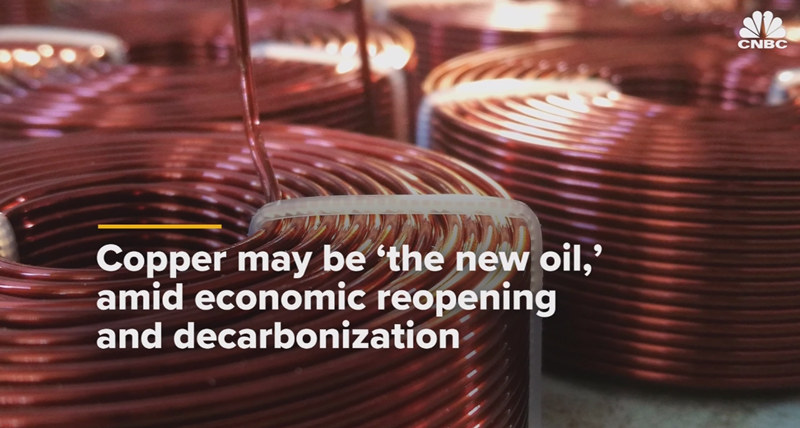Copper Is ‘The New Oil’ And Low Inventories Could Push It to $20,000 Per Ton, Analysts Say
The world risks “running out of copper” amid widening supply and demand deficits, according to Bank of America, and prices could hit $20,000 per metric ton by 2025.
In a note Tuesday, Bank of America commodity strategist Michael Widmer highlighted inventories measured in tons are now at levels seen 15 years ago, implying that stocks currently cover just over three weeks of demand. This comes as the global economy is beginning to open up and reflate.
“Linked to that, we forecast copper market deficits, and further inventory declines, this year and next,” Widmer said.
“With (London Metal Exchange) inventories close to the pinch-point at which time spreads can move violently, there is a risk backwardation, driven by a rally in nearby prices, may increase.”
Backwardation is when an underlying asset is trading at a higher price than the futures market for that asset.
Widmer also highlighted that a rise in volatility resulting from falling inventories was not without precedent, since nickel shortages in LME warehouses in 2006/7 drove nickel prices more than 300% higher.
‘The New Oil’
Along with the broader economic recovery, demand for copper is also being boosted by its vital role in a number of rapidly growing industrial sectors, such as electric vehicle batteries and semiconductor wiring.
David Neuhauser, founder and managing director of U.S. hedge fund Livermore Partners, told CNBC on Wednesday that metals were receiving a general tailwind from a weaker dollar and increasing moves toward green infrastructure.
“I think copper is the new oil and I think copper, for the next five to 10 years, is going to look tremendous with the potential for $20,000 per metric ton,” Neuhauser said.
Copper is a reddish-orange metal known for its high thermal and electrical conductivity. It is commonly used to produce a wide variety of products, including electrical wire, the essential part of LED lights.
Related news
1 week ago · 5 mins read
1 week ago · 5 mins read
2 weeks ago · 5 mins read
2 weeks ago · 5 mins read







